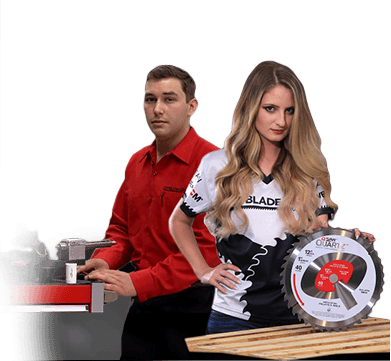There’s nothing more frustrating than having a bandsaw blade that seems to have its teeth facing the wrong direction. You might even think you need a new blade. But don’t rush out to buy a new one just yet. This common situation can be easily resolved. This blog post discusses a detailed guide on how to flip your band saw blade, inspired by the helpful Tech Tip Video from sawblade.com.
Understanding Your Band Saw Blade
Recognizing a Misoriented Blade
Not every band saw user realizes that sometimes, what seems like a manufacturer’s mistake could just be a case of misorientation. A bandsaw blade might arrive with the teeth pointing in the opposite direction than what you’re used to. This can be confusing and could lead to improper installation or usage. Before you attempt to handle your blade, however, ensure that you’re wearing gloves and proper eye protection.
The Importance of Correct Blade Orientation
Why does the orientation of the blade matter? The direction of the blade’s teeth impacts its efficiency and performance. The teeth of the blade should face towards the downstroke direction of the saw to ensure effective cutting. When the teeth face the wrong direction, it won’t cut as efficiently, and it could even damage your machine.
Flipping Your Band Saw Blade
Flipping Smaller Carbon Blades
As shown in the informative video tutorial by Austin Zimmerman, flipping your band saw blade can be as simple as a flick of a wrist. For smaller carbon blades, place your thumbs on the inside of the blade and roll your palms inward, letting the blade flick out naturally.
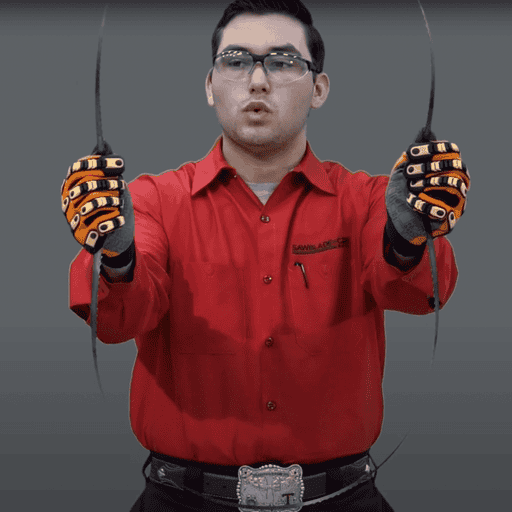
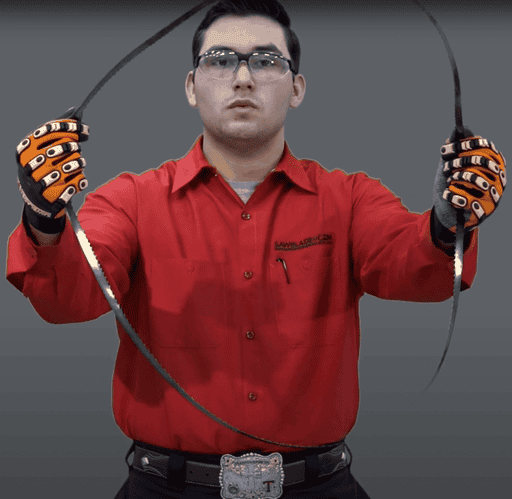
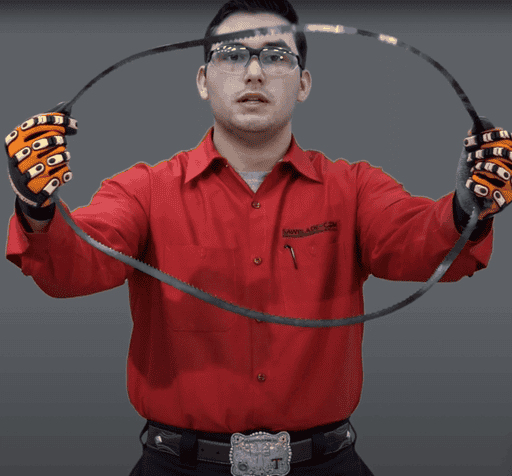
Flipping Larger Bi-Metal Blades
For larger bi-metal blades, the technique is slightly different. Hold your blade with your palms on the inside and your thumbs on the inside as well. Flick the tip of the blade while simultaneously rolling your palms outward. Congratulations! You’ve just flipped your bandsaw blade.
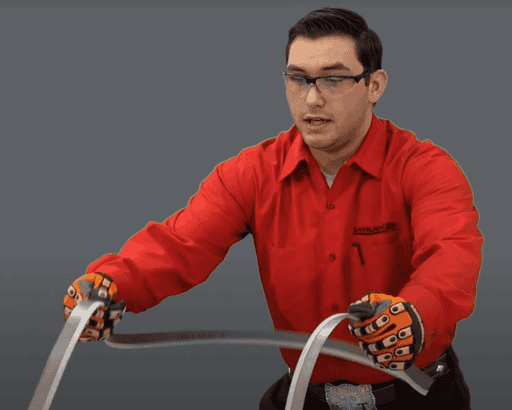


Further Tips for Band Saw Blade Maintenance
Knowing how to flip your band saw blade is a critical part of bandsaw maintenance. But there’s more to it than just that. You need to understand how band saw blades are welded, how to measure the length of a bandsaw blade, how to notice a dull bandsaw blade, how to use a bandsaw blade speed and feed calculator, and how to position material properly for efficient cutting.
These skills will not only help you achieve better cuts but also extend the life of your bandsaw and its blades.
Frequently Asked Questions
If your blade’s teeth are facing the opposite of the downstroke direction, then it’s misoriented. This guide explains how to flip your band saw blade for correct use.
Absolutely. You should always use gloves and proper eye protection when handling any bandsaw blade.
For smaller carbon blades, place your thumbs on the inside of the blade and roll your palms inward, letting the blade flick out.
With larger bi-metal blades, hold your blade with your palms and thumbs on the inside. Flick the tip of the blade while simultaneously rolling your palms outward.
You can find more technical and informational articles and videos on saw maintenance at techtips.sawblade.com.
Conclusion
Flipping your band saw blade is an easy yet crucial skill that every band saw user should master. It ensures that your machine is always running at its most efficient, and saves you from unnecessary blade replacements. With this guide, you should be able to flip your band saw blade like a pro. For more technical and informational videos, check out techtips.sawblade.com
For additional information and valuable resources related to bandsaw blades, check out the following articles:
- How Band Saw Blades Are Welded: A Comprehensive Guide
- How to Measure the Length of a Bandsaw Blade: A Step-by-Step Tutorial
- How to Notice a Dull Bandsaw Blade: Signs and Solutions
- Bandsaw Blade Speed Feed Calculator: Optimizing Performance
- Positioning Material for Optimal Bandsaw Blade Performance
We hope this guide has equipped you with the knowledge and confidence to handle your bandsaw blades effectively.






